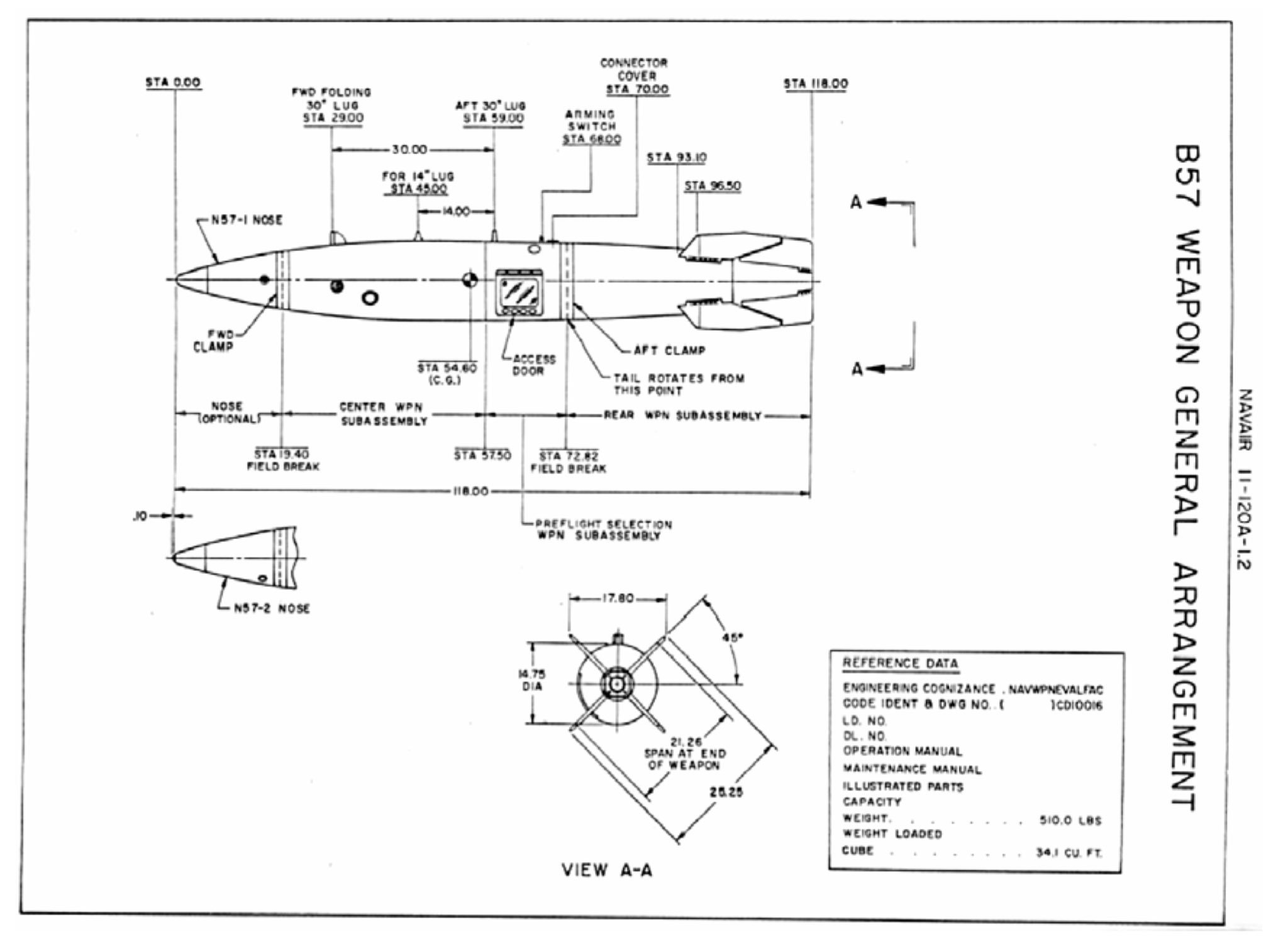Is the kill radius of a 10kT warhead 1nm under water against a submarine? Wouldn't the Trident have launched in that 15 minutes?
The safety standoff range from the ASROC's 10kt warhead is 4nmi, 8000yds. Pressure waves at 4nmi will be about 1/16 the energy of the energy at 1nmi, inverse square rule at work. Though it looks like the kill radius for 10kt is significantly less than that, based on Crossroads Baker. ~675yds.
If you have links to the data you used for your Pk assumptions I’d be interested in reading.
Straight from the Wiki on the ASROC, plus wiki on Operation Crossroads Baker. All subs within 850 yards of target were sunk.
What was the kill radius of the ocean surface detonation during the above ground testing phase of the Cold War?
Kill radius on Crossroads Baker was somewhere north of 1000yds, 1/2nmi. Though that
was for a ~22kt warhead. Let's drop the guaranteed kill radius to 675yd (1000yd / sqrt2.2) for a 10kt boom.
Adjusting to a 675yd kill radius for 10kt: a 750kt warhead will have about an 5500yd kill radius, so a single SS-18 would blanket an area about 16000yds across in the 90+% kill zone.
8nmi. Ouch, that's a much smaller area than I had originally assumed. 8x SS-18 would cover an area ~30nmi (don't want to do the trig to get a precise number) across, 15nmi radius. That's a heptagon with one missile landing in the center for pattern. A second ring would be 13 more birds, and cover an area about 44-45nmi across, ~22nmi radius. A third ring would be 19 more birds (40 total), ~29nmi radius. Holy crap, it might take a fourth ring to get a radius of 36nmi, 65 or 66 total birds(!), unless the Russian command and control is pretty quick... 1+7+13+19+25 or 26.
There are major major assumptions in this. Like the SSBN is only 15 minutes away from an ICBM field? The other side launches immediately upon detecting what may be a single D5? I understand US “in service” warhead count went down when they deployed the W76-2 cause they only had two per missile (I’ll try and find the info) which means the D5 would have to ICBM range - 12,000+km?
The Russians did detect an SLBM launch, from the middle of the Northern Pacific. Not from Cape Canaveral, not somewhere down by San Diego and flying towards Kwajelin. Somewhere up by Alaska.
The "fire mission" assumption is that the Ohio/Columbia launches 1-2 birds with tactical warheads, detected by Russia regardless of where the Trident missiles are going. Russia decides to take out that Ohio, so fires enough SS-18Mod5 to blanket the area. It's not the Russian Grid Square Deletion Service, it's the Russian Nautical Chart Area Deletion Service!
Said SS-18s have 10x 750kt warheads onboard each, centered on the launch position. (I'm going to drop the 3 extra warheads inside the hexagon of doom for extra kill power.)
Let's assume 30 minutes to upload the target location, doing this
before the rest of the launch preparations can happen, to give the sub the greatest advantage possible. Let's further assume that an SS-18 takes 25 minutes to prepare the missile for launch like the UR100N does. 15 minute flight time, for a total of
70 minutes from tactical Trident launch to Satan impact. The sub has displaced somewhere greater than 30nmi, but let's assume less than 40nmi because Ohios are big freaking subs.
Covering that much area would take 66 birds. Not worth the exchange to take out ~22 Tridents.
Now, let's assume that the "preparation time to launch" is just for loading the targeting data, so the missiles are ready to go in 25 minutes with that same 15min flight time.
40 minutes total. Sub has displaced by roughly 20nmi.
That area can be covered by 21 missiles. May-or-may-not be worth it, since you're taking out ~20-21 Trident missiles. And their launcher.
If the Trident is close enough to hit with a depressed-trajectory shot, that gets the
reaction time down to about 32 minutes, 25min prep plus ~7 minutes flight time. Sub has displaced roughly 16nmi.
That's iffy about 8 missiles covering the area in a 90+% kill zone, but 21 missiles would definitely cover it to overkill.
If the Russians can get their missile reaction time down to about 20 minutes total on that depressed-trajectory shot, that would make it a very high probability to take out an Ohio with only 8x SS-18.
It would take getting the total reaction time down to about 15 minutes before a single SS-18 could take out an Ohio after being revealed by a tactical Trident launch.

